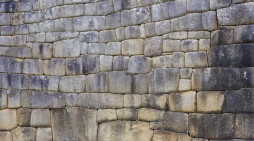
Photo (for illustration).
Caral - oldest city in the New World?
Dr. Ruth Shady of the Museum of Archaeology at the National University of San Marcos, Lima, Peru, is Project Director for the ongoing research at Caral. Radiocarbon dates from the ancient city of Caral, in the Supe Valley of Peru, 23 km from the coast (and not so far from Lima, the capital in Peru), display that monumental architecture there was under construction as early as 2627 B.C. and until about 2000 B.C. It was even before ceramics and maize were introduced to the region. By comparison, the Great Pyramid of Khufu in Egypt was built between 2600 and 2480 B.C. (referred from the Channel's website).
Big urban ancient complex
The enormous size of the urban complex is also remarkable: 65 hectares in the central zone itself, encompassing six large platform mounds (or "pyramids"), many smaller platform mounds, two sunken circular plazas, and diverse architectural features including residential districts. Caral is the largest recorded site in the Andean region with dates older than 2000 B.C. and appears to be the model for the urban design adopted by Andean civilizations that rose and fell over the span of four millennia.
Missing link
Reported by BBC, 31 January 2002 about what they call The Lost Pyramids of Caral: The site is a thousand years older than the earliest known civilisation in the Americas and, at 2,627 BC, is as old as the pyramids of Egypt. Many now believe the missing link of archaeology has been found - a "mother city". If so, then these extraordinary findings could finally answer one of the great questions of archaeology: why did humans become civilised?
Main city - The mother of all cities
For over a century, archaeologists have searched for what they call a mother city. Civilisation began in only six areas of the world: Egypt, Mesopotamia, India, China, Peru and Central America. In each of these regions people moved from small family units to build cities of thousands of people. They crossed the historic divide, one of the great moments in human history. Why? To find the answer archaeologists needed to find a mother city - the first stage of city-building.
Theory: civilisation through conflict
They couldn't find one anywhere. Everywhere this first stage seemed destroyed or built over. And so, instead, scientists developed a number of theories. Some said it was because of the development of trade, others that it was irrigation. Some even today believe it was all because of aliens. Gradually an uneasy consensus emerged. The key force common to all civilisations was warfare. The theory was that only the fear of war could motivate people to give up the simple life and form complex societies. To prove it, archaeologists still had to find a city from that very first stage of civilisation. If it showed signs of warfare, then the theory had to be true.
It would be interested to see if any theory could be verified about the nearly 5000 year old city Caral. Since it's so much older than anything else in South America, it is possible that it could be the mother city, which the researchers have searched for. Anyway it's incredible that such an elaborate complex of pyramids, temples, an amphitheatre and ordinary houses, has been so well preserved.
Stein Morten Lund, 15 February 2002
Additional information
References:
• Shady Solis, Ruth, Jonathan Haas, and Winifred Creamer.
• 2001 Dating Caral, a Preceramic Site in the Supe Valley on the Central Coast of Peru.
• Science 292:723-726.
Related links:
www.archaeologychannel.org/caralint.html
www.bbc.co.uk/science/horizon/2001/caral.html
www.rdboyd.com/rdboyd/Caral.html











